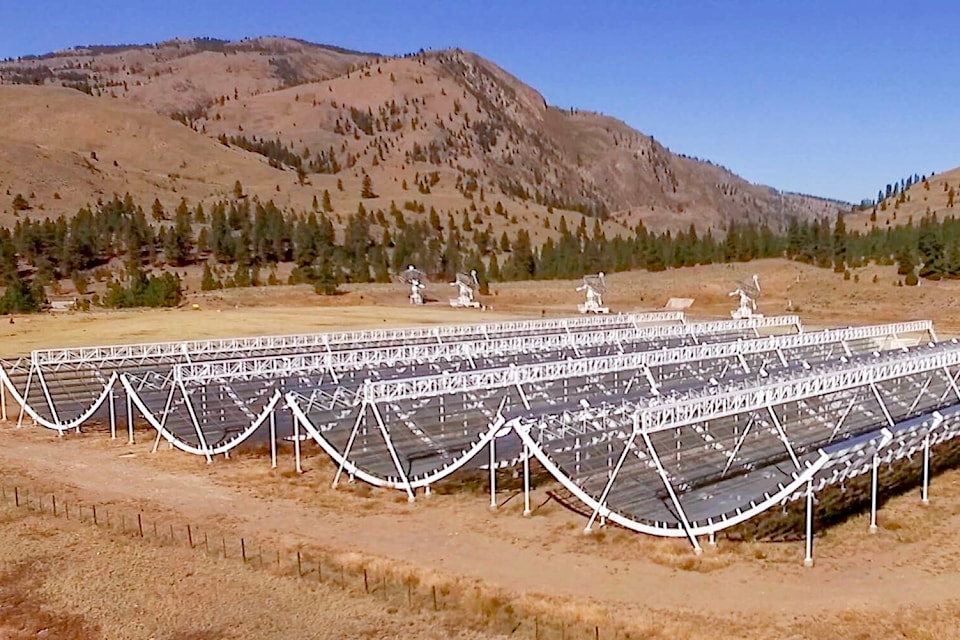Over the last week or two we have all enjoyed the media reports describing “fast radio bursts” or FRB’s, observed with the new CHIME (Canadian Hydrogen Intensity Mapping Experiment) radio telescope. This instrument has been constructed by a consortium of Canadian universities with support by the National Research Council and is located at our observatory in the Okanagan. FRB’s start off as extremely high-energy “clicks,” originating in sources no more than 300 km across. They are also extremely distant, and by the time those clicks reach us they are extremely weak, and only observable by a huge antenna connected to a highly sensitive receiving system. The big challenge is how to receive those weak signals in a world smothered with radio signals and interference we are generating ourselves.
When we turn on a light or some other electrical device, we transmit a pulse of radio waves, which sounds like a click on a radio receiver. Computers produce millions or even billions of these clicks a second. It gets worse. These days we have electronic devices in our pockets, purses, vehicles and homes. Most of these radiate tiny bits of radio interference, usually as streams of high-speed clicks. All these add up to something that reduces the sensitivity of our radio telescope receivers or completely obliterates the cosmic radio signals. These devices are now part of our daily lives, so we cannot ask people to shut them down, except maybe for short periods, for example when visiting our radio observatory. In such a world, what can we do to ensure radio observatories can operate while we continue to use our electronic devices?
The problem starts at the observatory. Our daily work and research involves high-sensitivity radio receiving equipment operating close to computers and digital signal processors, which are probably the worst interference generators available. Our solution is to put computers and digital devices into screened enclosures or rooms. We don’t use fluorescent lights because they make interference. Then, all our equipment in screened enclosures and rooms are also in a screened building. We know what sorts of equipment will cause interference, but we also get surprises, such as the postage meter, used for outgoing mail, which turned out also to be a powerful transmitter, and ended up in a screened room. Because we cannot predict all the problems we might be causing for ourselves, we have an antenna farm on the roof of the building, connected to electronics for searching for and identifying interference. This equipment is also enclosed in a screened rack.
The main things protecting our observatory are the hills surrounding it. They block most of the radio interference coming from the surrounding communities. Additional protection comes from the observatory’s needs being part of local community planning and the way the Federal Government licenses the operation of radio transmitting and other electronic systems. Finally, radio waves have no respect for international borders, and there are radio systems on aircraft and spacecraft passing overhead. Making sure we can all use the radio spectrum and do what we need to do without interfering with each other is overseen by the International Telecommunication Union, an agency of the United Nations. In this international forum, we work together to make sure the radio spectrum remains usable for all, whether we want to communicate with a friend or detect radio emissions from the distant reaches of space. Those exciting results from the CHIME radio telescope indicate that so far we have managed to look after our radio spectrum pretty well.
Mars, fading as it recedes, lies in the south after dark. Venus and Jupiter lie close together in the eastern sky before dawn — Venus is the brighter one. The moon will reach last quarter on Jan. 27.
Ken Tapping is an astronomer with the National Research Council’s Dominion Radio Astrophysical Observatory, Penticton. Email: ken.tapping@nrc-cnrc.gc.ca
